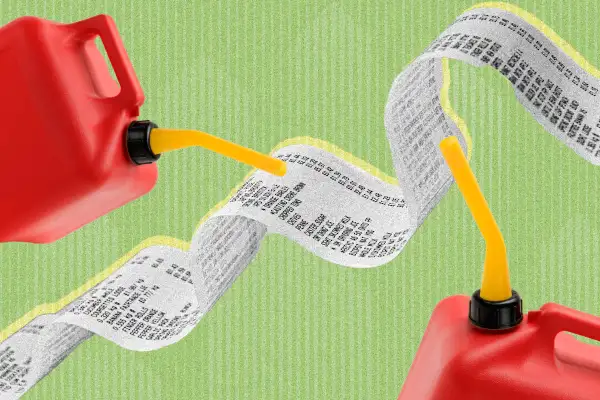Gas Prices Are on the Rise Again. Here's Why

Drivers have enjoyed lower gas prices this winter between $3 and $3.30 nationally, but costs are rising and experts say the trend will likely continue in the spring.
A regular gallon of gas costs an average of $3.34, which is 10 cents more than a week ago and 22 cents more than last month, according to gas-price tracking site GasBuddy.
Unfortunately for drivers, there are several reasons why the outlook calls for gas prices to keep climbing — and why it's wise to keep looking for ways to save on gas.
On Sunday, several OPEC+ countries announced they were extending oil production cuts, which puts upward pressure on oil and gas prices.
Crude oil, which accounts for about 57% of what drivers pay for a gallon of gas, was trading at around $79 per a barrel on Monday, according to the West Texas Intermediate measure. The cost is up about 9% in the past month, and it's near the highest level since November. Seasonal trends play a factor in the rise and fall of gas prices too.
Why gas prices rise in the spring
Historically, gas tends to be cheapest in the winter when driving activity is low and the country is using winter-grade gasoline. In the spring, demand for gas picks up as warmer weather arrives and prices are also impacted as refineries switch to the more expensive summer blend.
“We’re entering spring break season, and historically, March and April bring higher gas prices,” AAA spokesperson Aixa Diaz said in a recent report. “With milder temperatures come more road trips, and this time of year tends to be a precursor to the summer driving season.”
Patrick De Haan, head of petroleum analysis at GasBuddy, said in a report that refinery maintenance usually peaks in March, “impacting how much gasoline can be produced as we make the changeover to the summer blends. This always crimps supply, leading to further gas price increases.”
On a more positive note, gas prices are lower than they were at this time in 2022 and 2023. In some states, the average is still below $3 per gallon, including Mississippi ($2.88), Colorado ($2.93) and Texas ($2.93), according to AAA.
Citing increased U.S. refinery capacity, the Energy Information Administration forecasts that gas prices will be lower overall in 2024, averaging $3.31 per gallon, compared to $3.52 last year.
More from Money:
The ‘Greenest’ New Car You Can Buy Today Is Actually Not an EV

